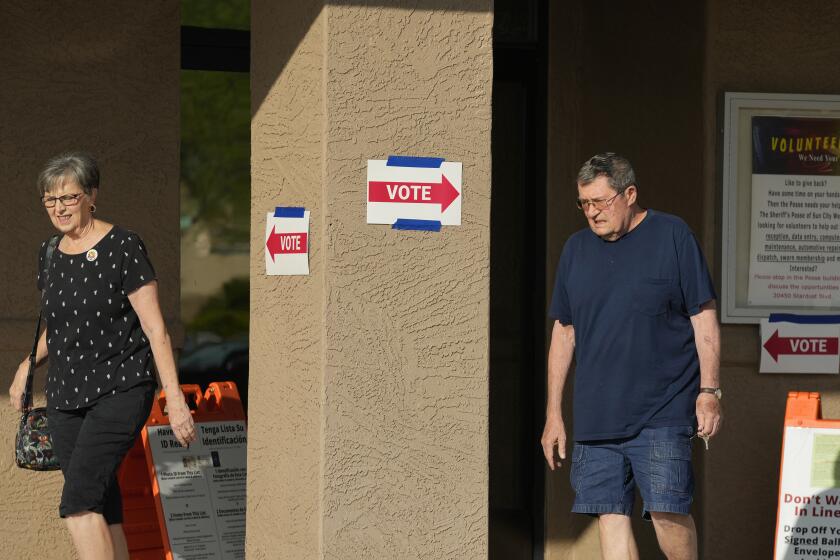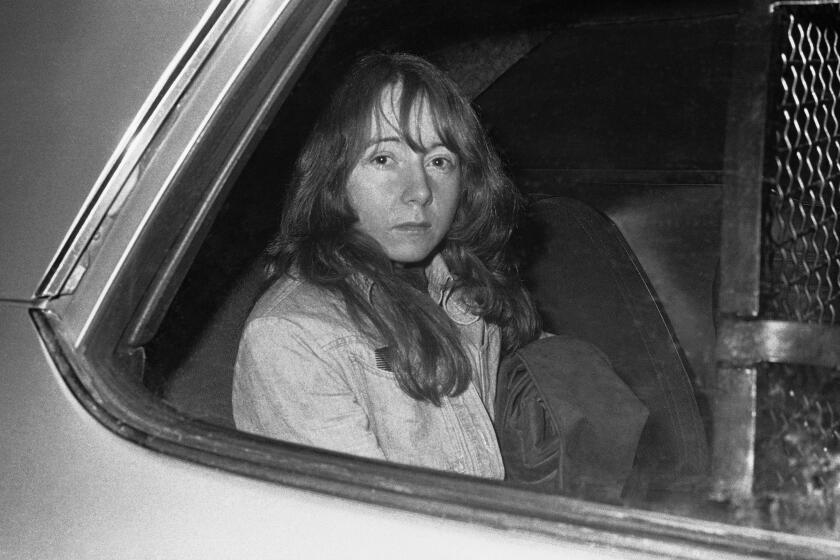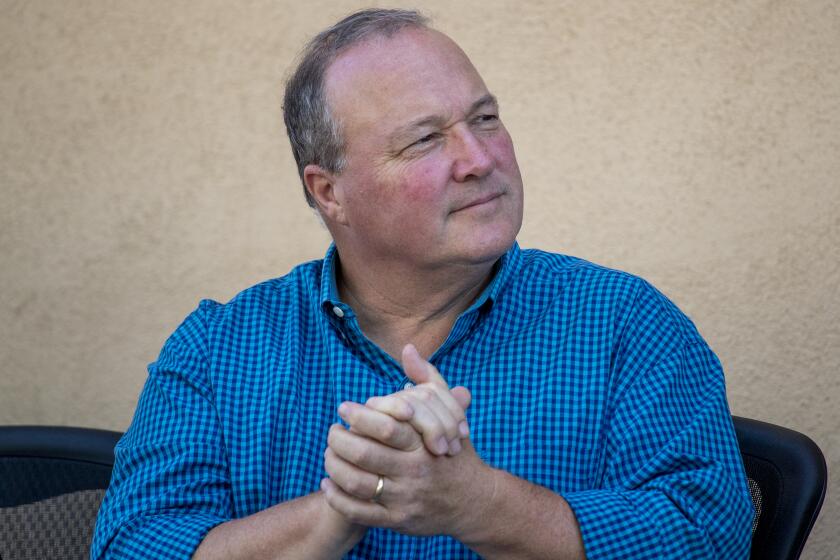Luxurious battleground
Beverly Hills, a former cattle range turned city of $200 steaks, is mired in a controversy that highlights anew the crosscurrents buffeting the famed citadel of luxury.
The battle pits those who hope to import one of New York’s most famous hotels -- the Waldorf-Astoria -- and build a batch of new luxury condos against residents who say enough is enough, the streets are already clogged to the point of gridlock.
It pits a city administration that has recently approved several large commercial developments against those who yearn for the days when Beverly Hills had the charm of a village, albeit a village where natives cheered when Spago became a local hangout.
It has set neighbor against neighbor and former mayor against former mayor.
The mood is getting ugly there in 90210.
Come Nov. 4, voters will be asked to decide: Should the Beverly Hilton be allowed to build a high-rise Waldorf-Astoria hotel and two luxury condo towers on its site at the bustling corner of Wilshire and Santa Monica boulevards?
The Hilton maintains that the proposed project would provide millions of dollars of needed tax revenue for police, firefighters and schools and would revitalize a dated corner.
Opponents counter that the project is just too big and that the Hilton is exaggerating the potential benefits. Even some residents who generally favor development fear the result would be more traffic congestion and increased density in a city that is losing its legendary charm.
“It’s no longer a village,” said Larry Larson, a real estate attorney and commercial property owner who is leading the effort against Measure H, the November ballot measure that will determine the fate of the expansion. “The cumulative effect has been overwhelming.”
The stakes are high, and so are emotions. Bruising political battles pop up routinely in Beverly Hills, and this one promises to be memorable.
After the City Council narrowly approved the Hilton project in April, detractors gathered enough signatures to put the issue before the people, in the hope that a majority would derail the plan -- or induce the Hilton to scale it back -- by voting no. Now, “Yes on H” and “No on H” lawn signs duel for attention along the mansion-lined drives.
The fight is reminiscent of the melee over the Montage, a $200-million resort hotel nearing completion between Canon and Beverly drives, just north of Wilshire Boulevard, in the city’s commercial area. The City Council approved that project in 2004, but foes, deriding it as a gridlock-producing behemoth, won support for a referendum. In March 2005, voters approved the project, and the eight-story, 201-room hotel is scheduled to open in mid-November. Since the Montage vote, the City Council has approved five other large projects, including the Hilton’s and the so-called 9900 project next door at the site of the former Robinsons-May department store.
In the Measure H clash, reports of insidious tactics abound, with each side accusing the other of indulging in lies and unethical behavior.
The Beverly Hills Courier, a local weekly newspaper whose publisher, Clifton S. Smith, avidly supports the project, recently displayed a series of front-page photos showing Richard Stone, a former mayor who opposes the expansion, removing a Yes on H sign and stashing it in some bushes. Meanwhile, Les Bronte, another former mayor, is helping the Hilton with community outreach. Another former mayor, Mark Egerman, a land use attorney, was part of the Hilton’s legal team.
Beny Alagem, 55, the owner of the Hilton, said voter approval of the project would enable him to realize a long-held dream.
When he arrived in the United States in 1975, he spent a night at the hotel and was captivated. He went on to co-found Packard Bell Electronics in 1986. Through an entity called Oasis West, he bought the property in 2003 from Merv Griffin for a reported $130 million. By then, the hotel had lost some of its once extensive connections to Hollywood royalty.
Alagem, who moved to Bel-Air after living for many years in Beverly Hills, said he invested $80 million in an overhaul of the hotel to “bring back the glory it always carried.”
To win support for the expansion, Alagem has held brunches and other gatherings, including open-bar cocktail parties at Trader Vic’s Lounge, which replaced the venerable Trader Vic’s restaurant, which the Hilton closed last year.
“I’ve never seen an event like that,” said Macey Lipman, who early this year attended a party with what he estimated as several hundred other residents. “There must have been half a million dollars of food.”
Lately, Alagem has been speaking at coffees and knocking on doors to explain his project, which would entail adding a 12-story, 170-room Waldorf-Astoria hotel and two condo towers, one of them six to eight stories and one 16 to 18 stories. The new hotel rooms would replace 217 rooms that would be demolished as part of the plan, for a net reduction of 47 rooms.
Alagem said he expected the five-star Waldorf rooms to fetch $480 to $550 a night, well above the rack rates for the Hilton rooms that would be demolished. He anticipates that the project would yield $12 million a year in additional revenue for the city.
He also contends that the Hilton’s planned traffic improvements, including new lanes and synchronized lights, would improve traffic flow at the intersection. Some critics say that defies logic.
“I do think traffic is going to increase,” said resident Jill Radin.
Other Hilton statements have rankled voters.
In glossy brochures distributed to residents, the Hilton states that the Beverly Hills planning commission, an advisory body, unanimously recommended the Hilton’s environmental impact report, which was then certified by the City Council.
But Stacy Marks, a planning commissioner who studied the project for nearly seven months, said the five-member panel approved the report with conditions: that the Hilton eliminate the shorter of the two condo towers planned at Wilshire Boulevard and Merv Griffin Way, that the other building top out at 16 stories and that the Hilton add more parking.
Many critics contend they would get behind the project if the Hilton scaled it back. Eliminating the condos would be a start, Larson said.
But Alagem contends that a smaller project would not be economically feasible. “If Measure H is defeated,” he said in a recent letter to residents, “that is the end of the project.”
Measure H remains the talk of the town. This city “paved with gold . . . is a tough town to make people happy,” said resident Stacey Raskin, who supports the project. “You have very intelligent, educated people all in one space and everyone thinks they’re right.”
--
More to Read
Get the L.A. Times Politics newsletter
Deeply reported insights into legislation, politics and policy from Sacramento, Washington and beyond. In your inbox three times per week.
You may occasionally receive promotional content from the Los Angeles Times.











